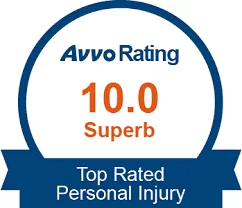What is Med Payments Coverage?
Medical payments coverage, also known as MedPay or medical expense coverage, helps pay the medical costs after you or one of your passengers are hurt in a car accident or any kind of auto-related injury. Medical payments coverage isn’t affected by who is found at fault for any specific accident.
What this article aims to do is give you a comprehensive overview of what medical payments covers, what to consider when purchasing medical payments coverage, how the coverage works, how much it costs, and coverage limits and exception details. By closely examining the information entailed on this page you’ll be able to better understand how MedPay can benefit you and your loved ones in the case of a car accident, and how this kind of coverage can potentially save you a ton of money within certain circumstances.
What does MedPay cover?
Medical payments coverage will pay for pretty much all medical costs that occur after you are hurt in an auto-related injury, and some examples of what your specific insurance policy’s MedPay coverage helps pay for includes the following:
- Passenger injuries
- Injuries sustained as a bicyclist or pedestrian
- Funeral expenses
- Necessary dental care post-accident
- Ambulance and EMT fees
- Hospital visits/stays
- Doctor visits
- X-rays and surgery
- Professional nursing care and services
- Prostheses
Another important aspect of MedPay in terms of what it covers, is that it follows the policyholder. This means your medical payments coverage is active when you’re riding in a friend’s car, using public transit, or even simply just walking down the street; and MedPay stays active when you’re in and out of the specific state you’re insured within.
There are going to be different restrictions and benefits among car insurance companies, so it’s a good idea to examine the full details of each company’s medical payments coverage with an insurance agent while comparison-shopping for car insurance.
Who needs medical payments coverage?
Medical payments coverage is useful for just about anyone because it covers your family, your employees and other passengers in your car, as well as yourself. Therefore, it’s a crucial insurance coverage in terms of protecting the people you care about, as well as yourself, in the case of an auto-related accident.
In some states medical payments coverage is mandatory while in other states it’s not even available, so it’s important to look in-depth into your coverage options and ask your insurance provider about your options in terms of medical payments coverage.
How Does Medical Payments Coverage Work?
In general, there are two ways in which MedPay works, and that’s either as a direct reimbursement as your primary coverage, or as supplementary coverage to your pre-existing health insurance coverage. When you utilize MedPay as a supplementary coverage, it can get a little confusing in terms of whether your health insurance or MedPay covers your medical costs first, and this is because each insurance company will differ in how they utilize the combination of coverage. The best thing to do if you decide to utilize MedPay as a supplementary coverage is to check your policy to be sure which would pay out first.
A typical situation in which MedPay coverage works is when a driver has medical bills and they pay for them up front, and then they are reimbursed by their auto insurance company. In this situation you wouldn’t have any co-pays or deductibles to meet.
When someone uses MedPay as a secondary coverage, their health insurance policy pays for the majority of medical expenses, and then they could use MedPay for deductibles or co-pays in order to get health insurance kicked in.
Usually MedPay allows rather low limit choices per-person per accident because it’s intended for immediate medical costs that result from accidents, or to supplement other insurance policies in these dire situations. Another thing to consider with MedPay coverage is that it won’t apply to someone who is injured while working when worker’s compensation applies.
Do you need MedPay when you have Personal Injury Protection or health insurance?
All three of these coverage options will overlap each other, and the truth is that the answer to this question will primarily depend on the specific structure of your health insurance policy and where you live. No matter what, it’s a good idea to consider medical payments coverage when you have personal injury protection (PIP) and health insurance.
Health insurance will cover any medical expenses, but some policies don’t cover car accident injuries, which can be catastrophic in certain circumstances if you don’t have MedPay to offset those expenses. Even if your health insurance covers car accidents, you’ll still more than likely have to pay up to your deductible and co-pays before the insurance company will cover the rest of the expenses. When you use MedPay, you get reimbursed for co-pays and deductibles if you get billed, but as convenient as this sounds you’ll also have to remember the extra monthly cost of MedPay as it compares to the amount of a specific deductible. If you have a gold or platinum health insurance plan, you’ll likely not need MedPay because you wont have any deductibles to reach and your policy will cover car accidents.
Personal Injury Protection (PIP) tends to cover more than MedPay because MedPay is concerned with direct or surgical medical care while PIP also covers rehabilitation and psychiatric care, as well as lost wages. Some states require PIP while others don’t, and in states where PIP is required you’ll want to potentially look into increasing your PIP limit to outweigh any MedPay benefit and see which one works best for you financially. PIP is always subject to claim limits, which is why it makes sense for drivers to also consider purchasing medical payments coverage. If your medical bills exceed PIP limits, you’ll have to pay out-of-pocket, but MedPay would be able to help you pay for those expenses. In a best-case scenario you would use PIP to help recover from lost wages and rehabilitation costs and also get reimbursement for doctor and hospital visits through MedPay.
How much does MedPay cost?
MedPay policyholders are able to choose the maximum dollar limit that their coverage will pay out per person in a car accident, and this limit determines how much of an increase you’ll see in your auto insurance policy’s monthly payment.
It’s generally very easy to add medical payments coverage to any policy because you can do it at any time and it’s generally the least expensive type of car insurance coverage. The common coverage limits per person per incident across the five major insurance auto companies include $1,000, $2,000, $5,000, $10,000 and $25,000. For the higher $25,000 option it varies dramatically and would only be an additional $6.87 per month for State Farm and an additional $32 and $35 for Allstate and Progressive, respectively. For $5,000 per person per accident it’s an additional $19.18 per month for GEICO and $20 and $17 for Allstate and Progressive, respectively.
Getting MedPay coverage is very affordable so it’s not too much of a financial burden to tack onto your monthly bills, and it can of course go a long way in saving you thousands of dollars when you get severely injured in a car accident.
MedPay Coverage Restrictions and Exceptions
In order to purchase Medical Payments coverage you are going to need to have Liability insurance or Contingent Liability insurance, and there are also a few other restrictions that are important to know about including the following:
- For multiple vehicles the MedPay limits have to be the same on all vehicles under a policy
- In some states if you get MedPay on one car you have to get it on all of your cars under your policy
You can also not apply MedPay coverage to trailers or any other attached equipment because it is only available for vehicles.
Contact an Experienced Atlanta Accident Attorney
Contact us today to determine your legal options. By examining the facts around your accident, your attorney provider can secure compensation, defend your rights and ensure top-quality damage restoration. Even if you were partially negligent, the main party at fault, in most cases, will need to support your recovery.



